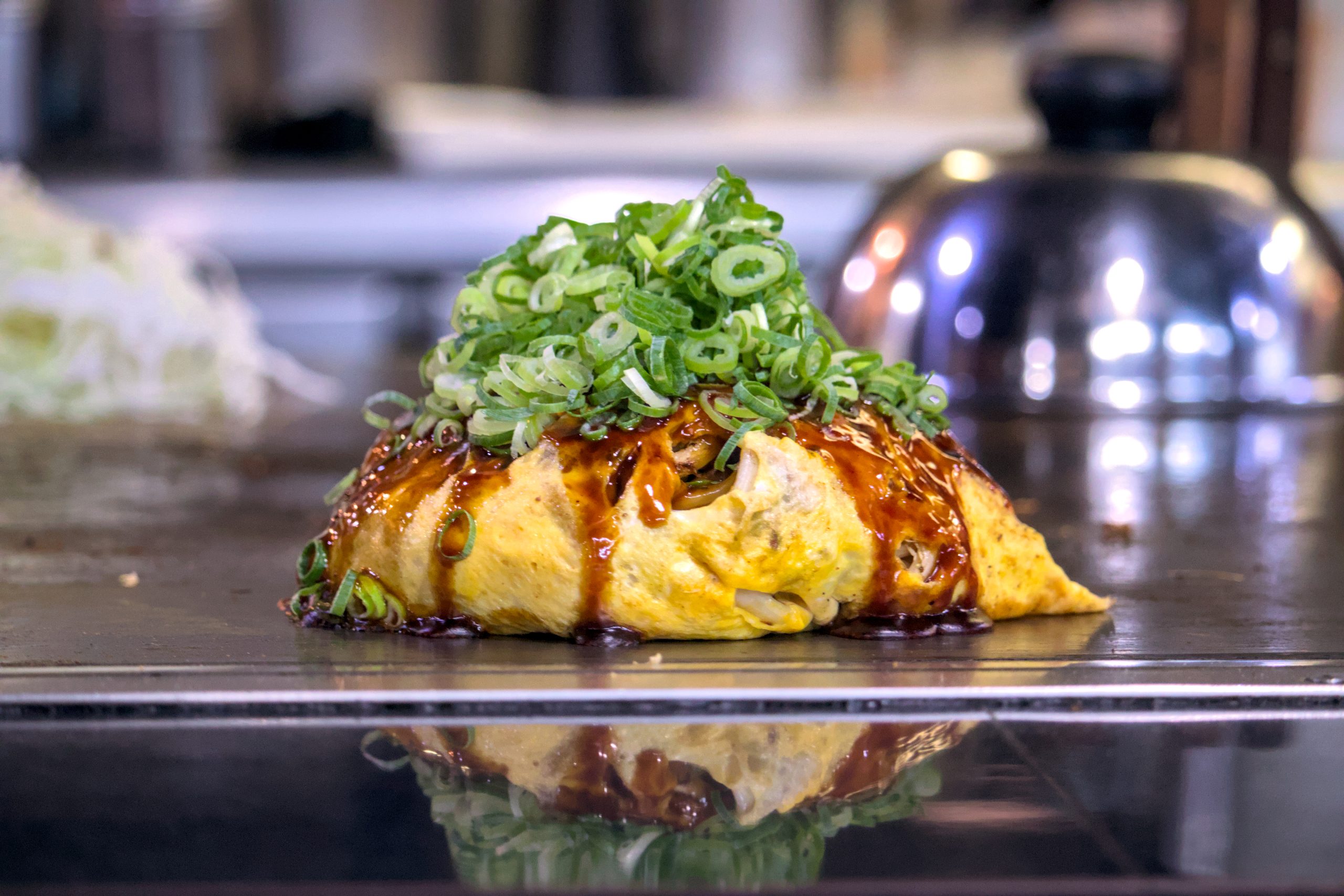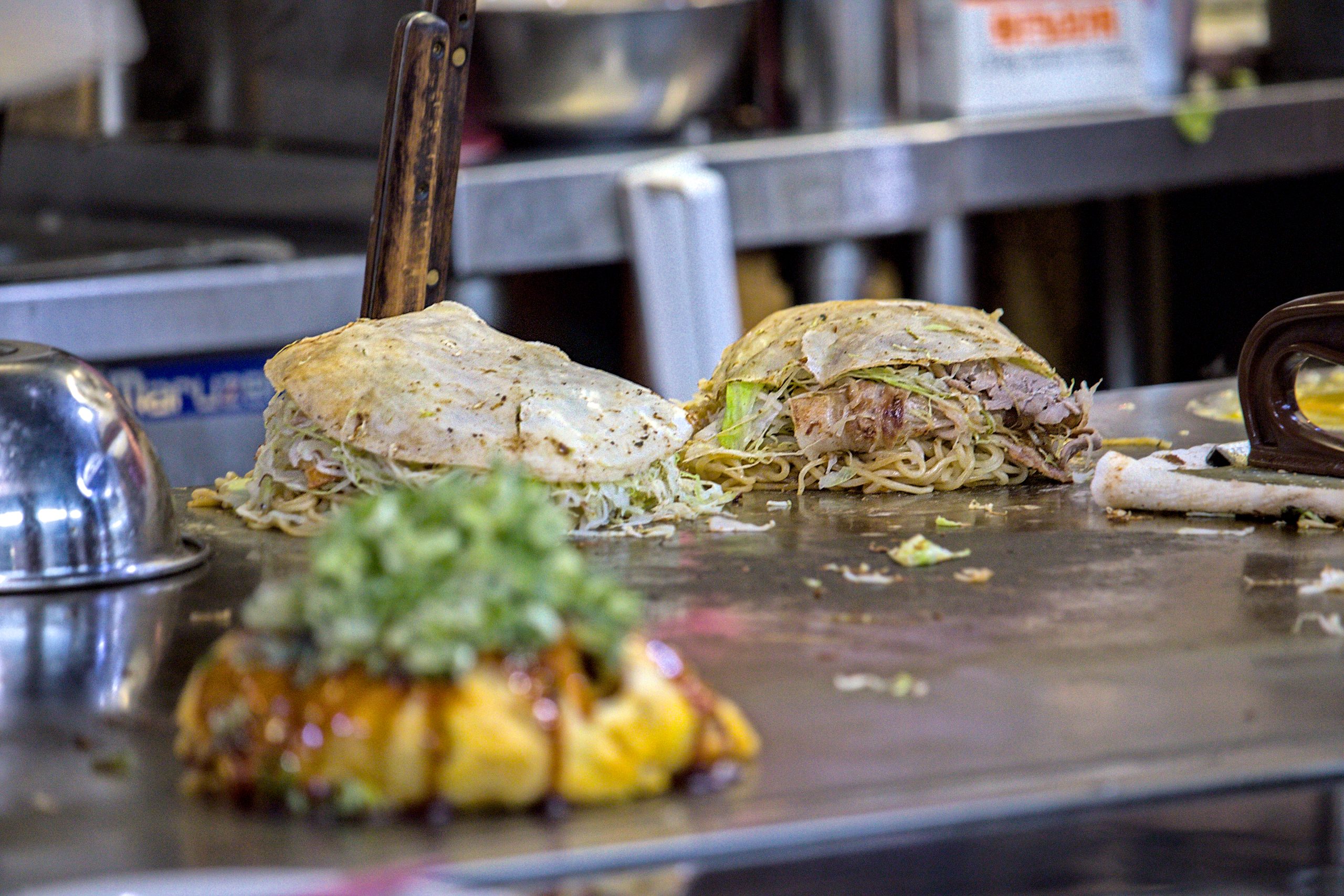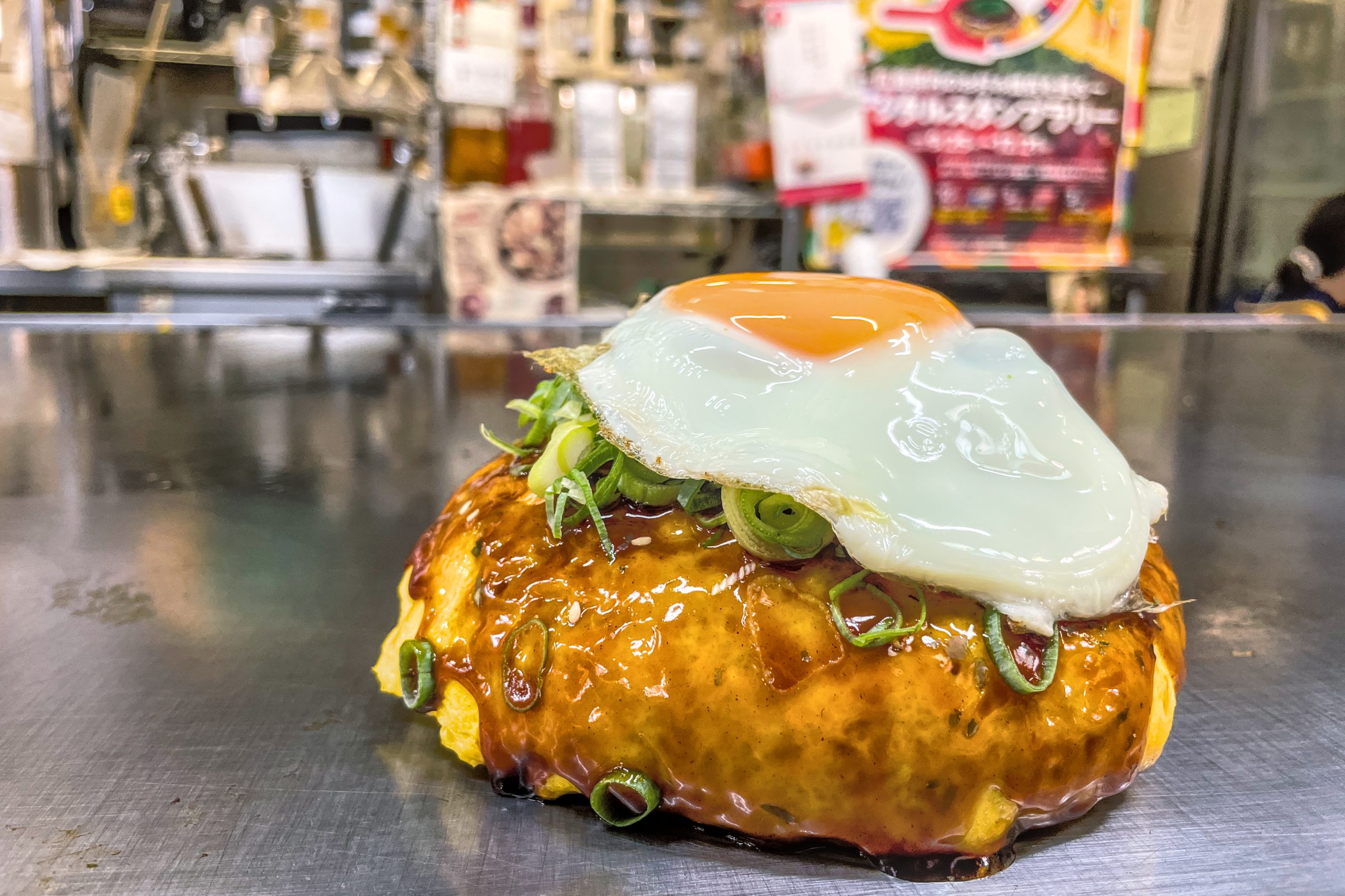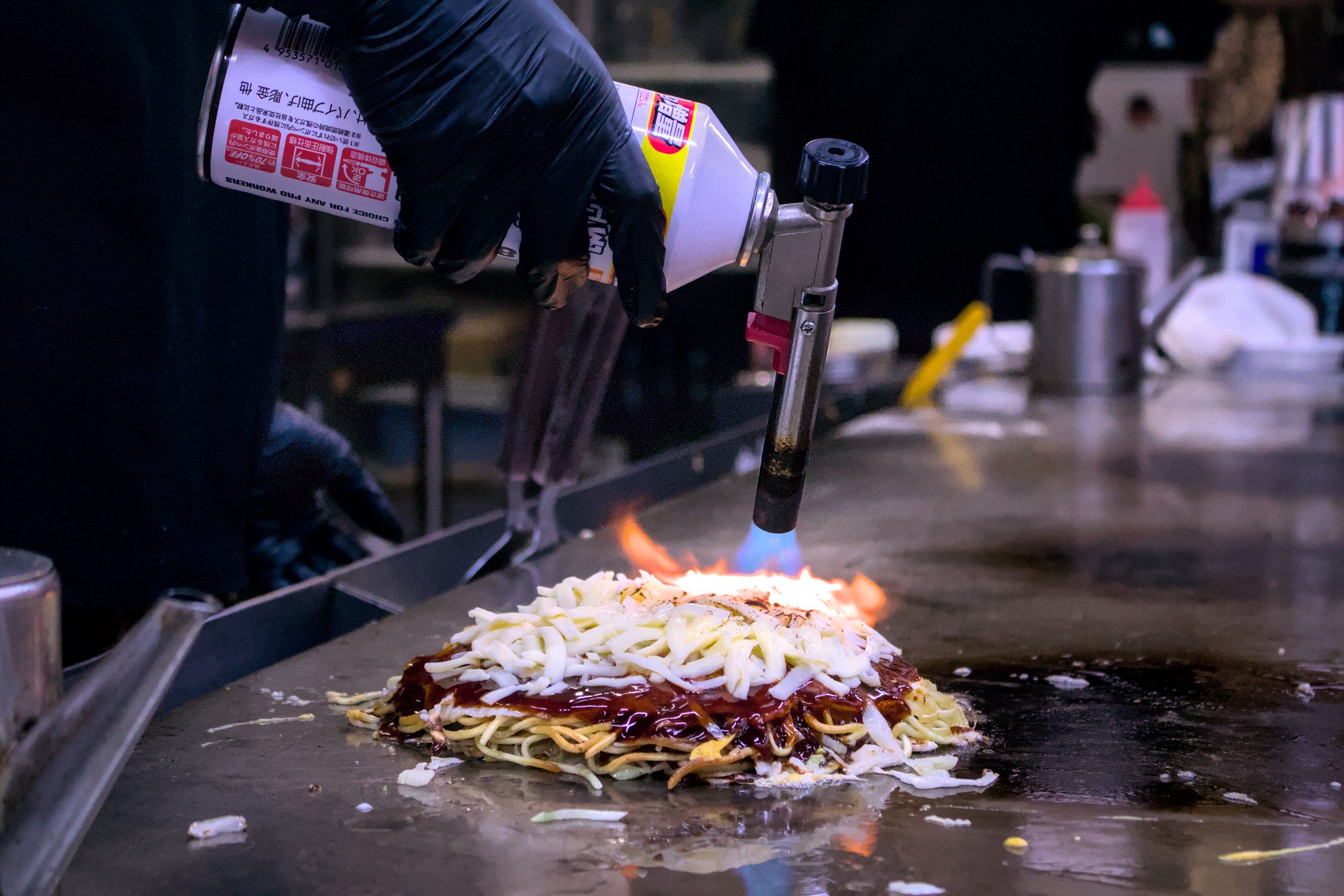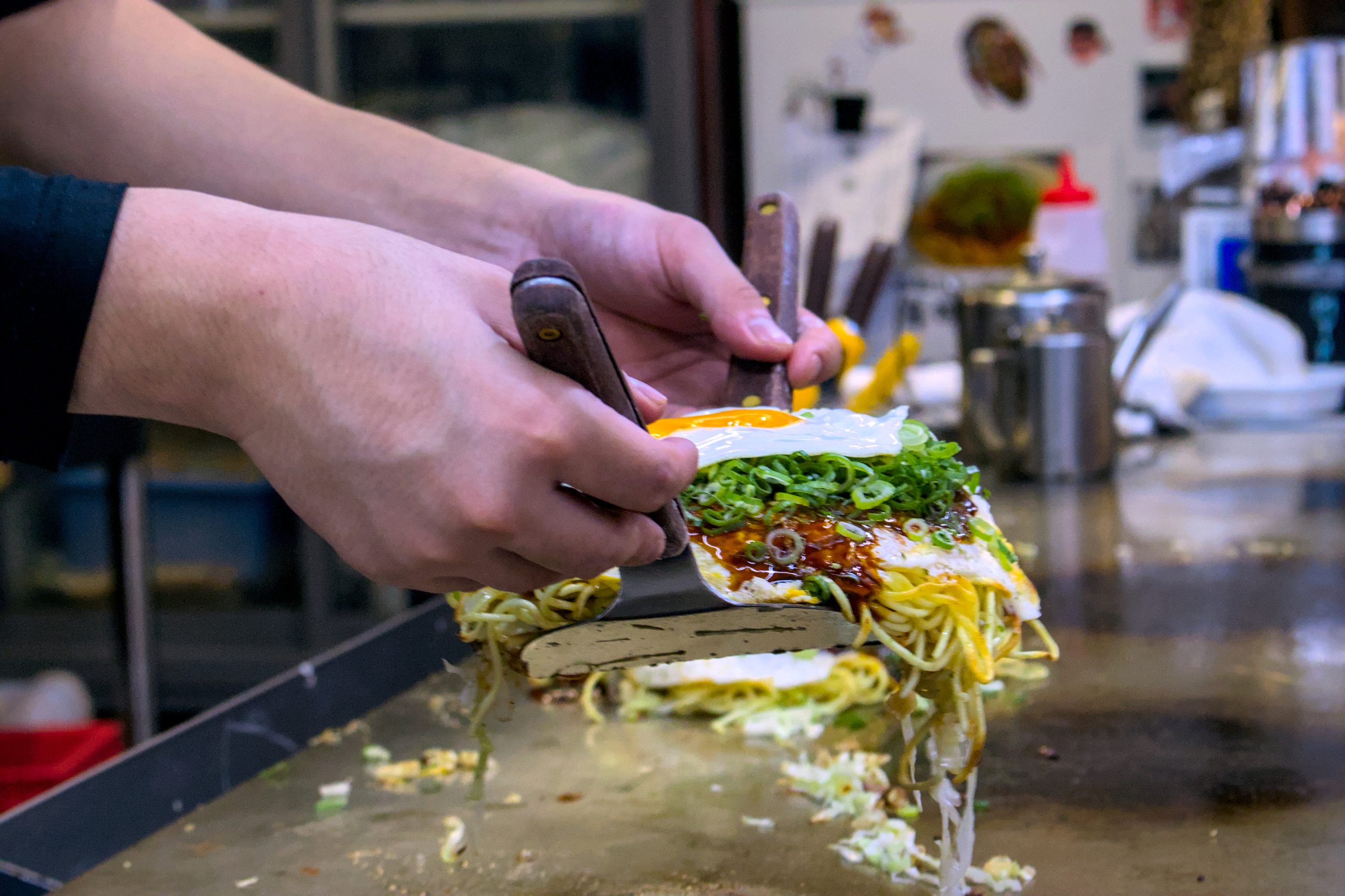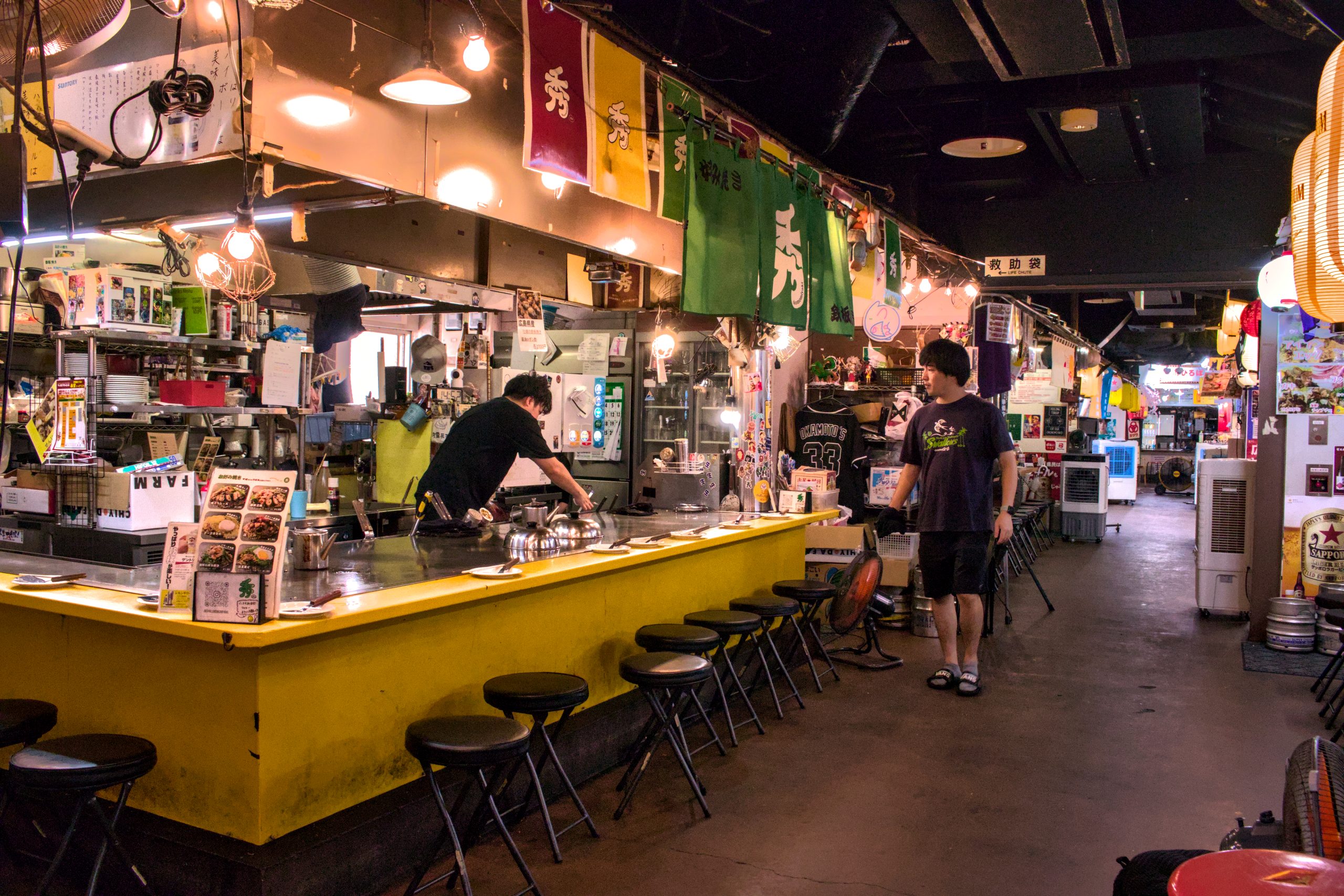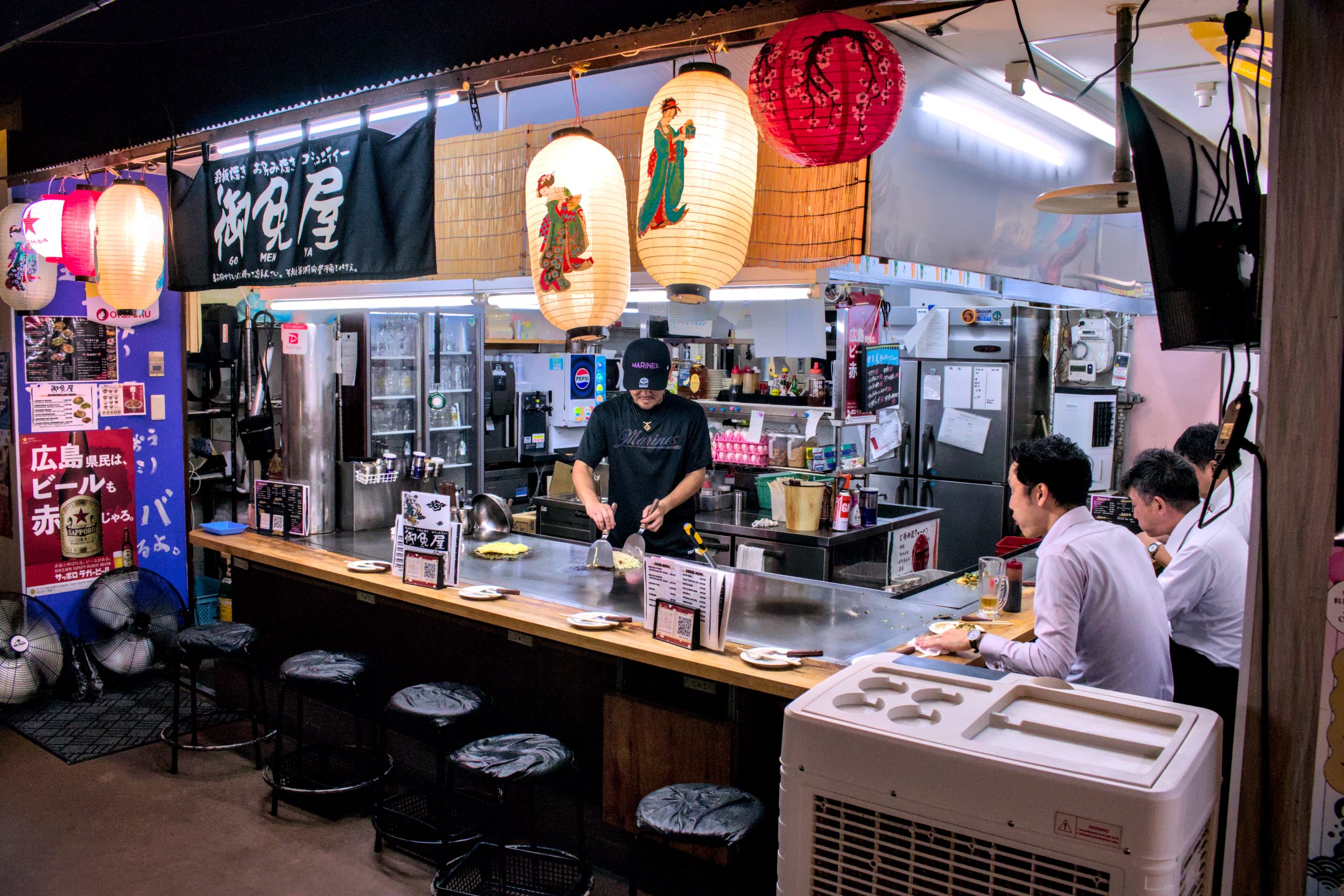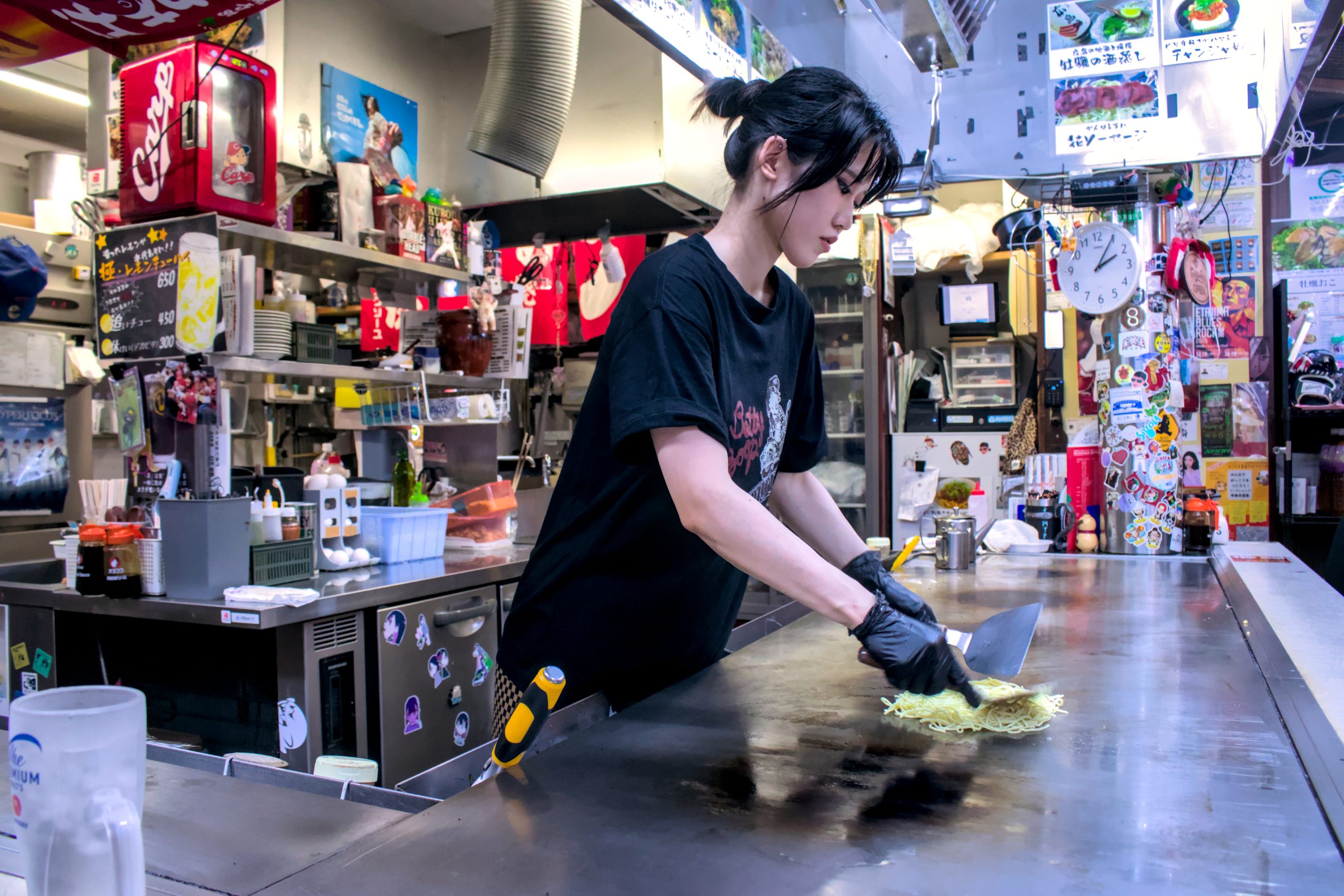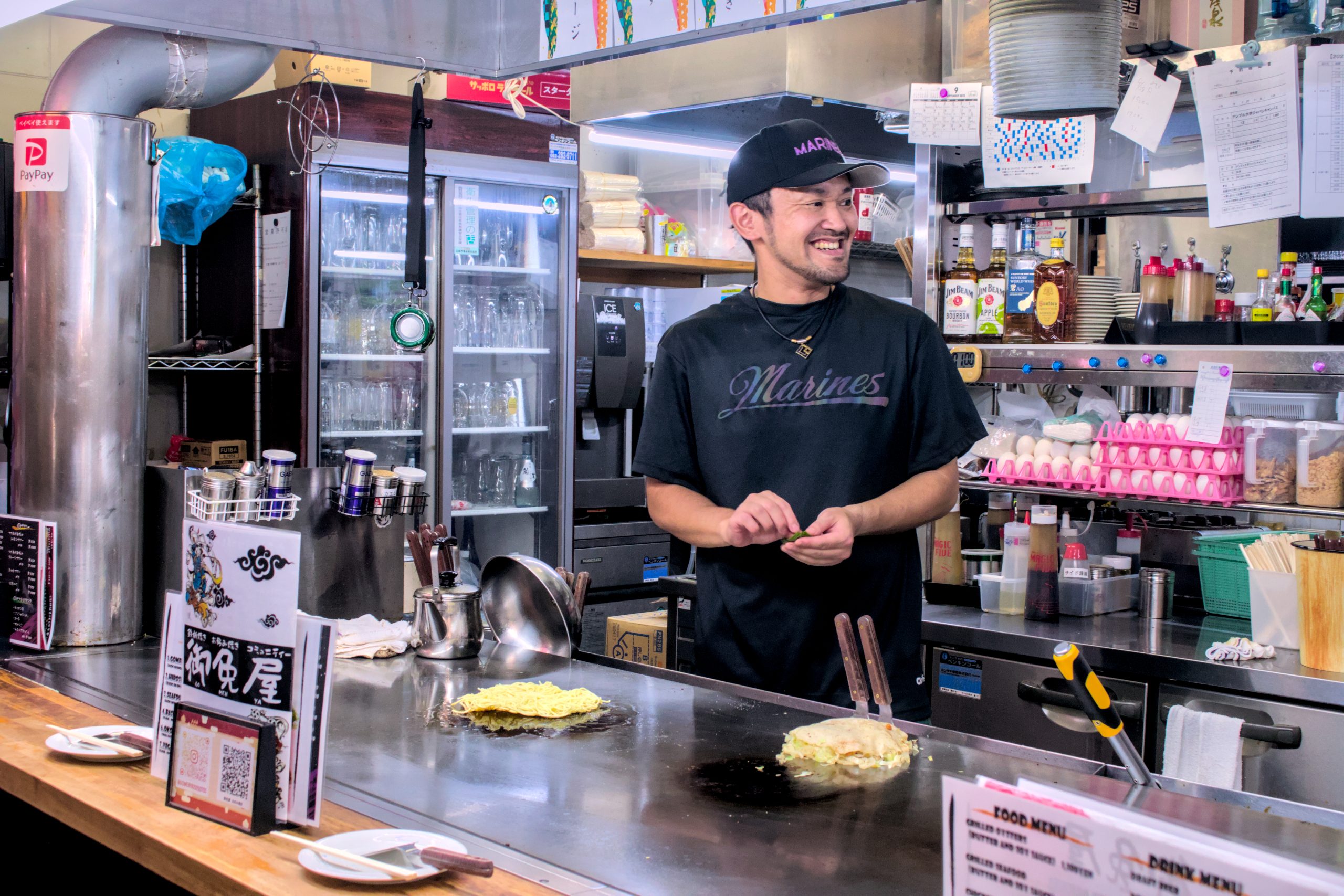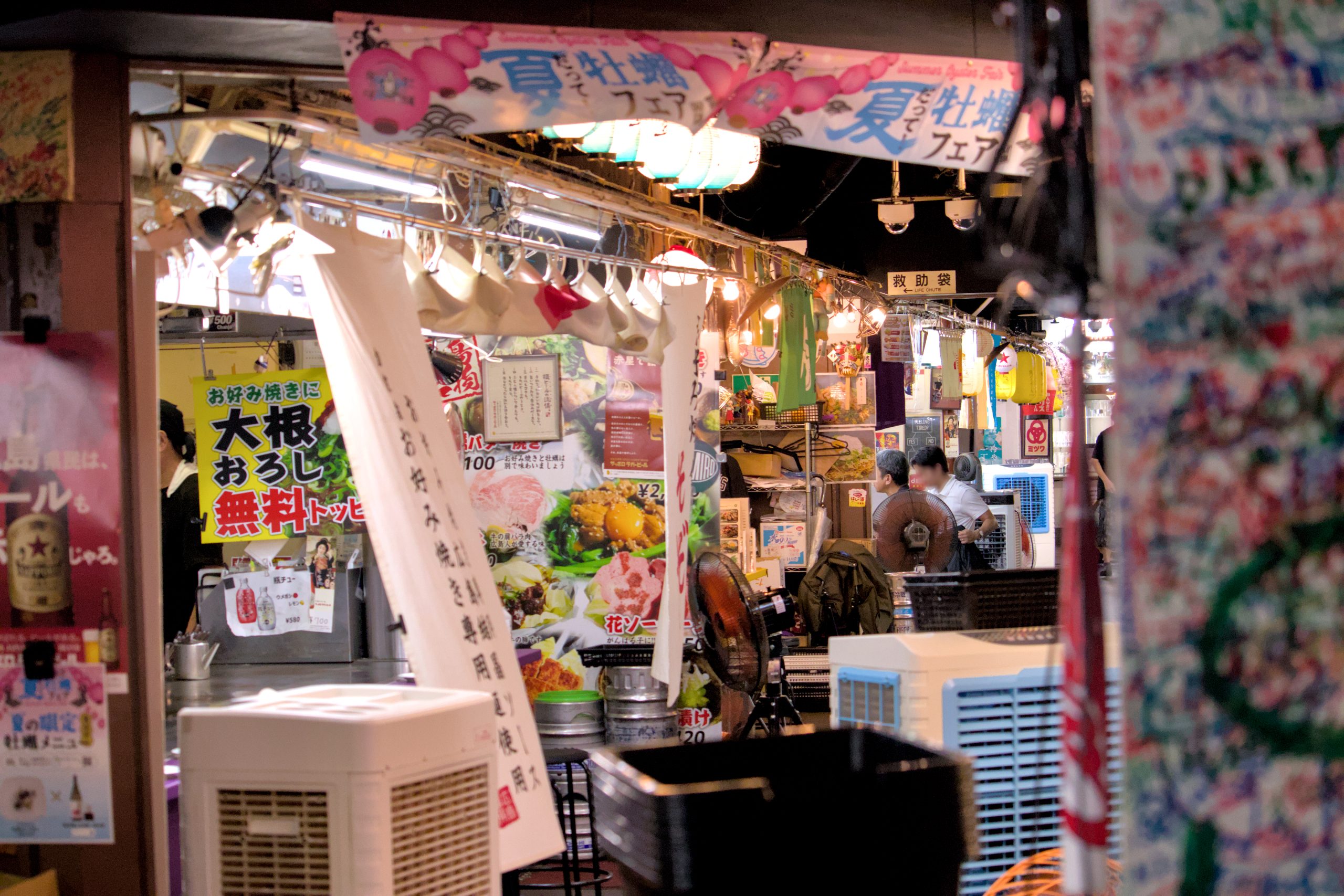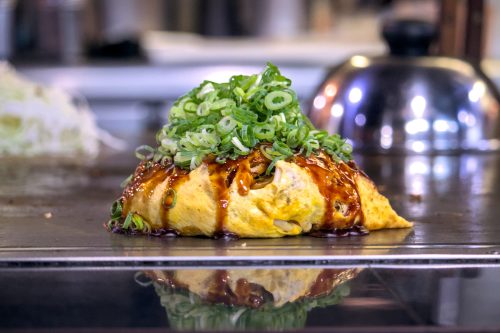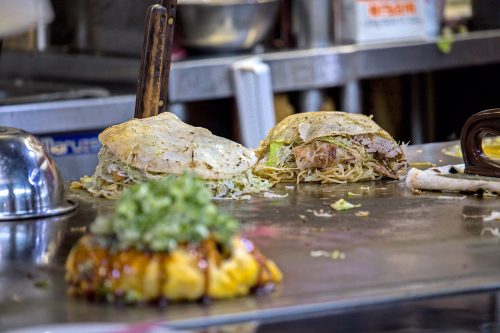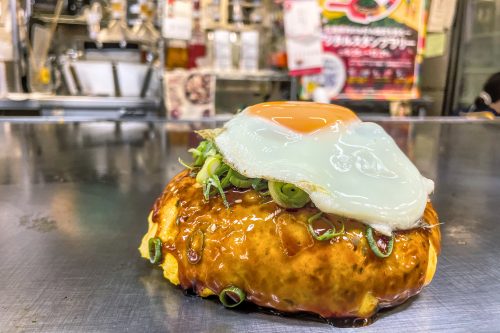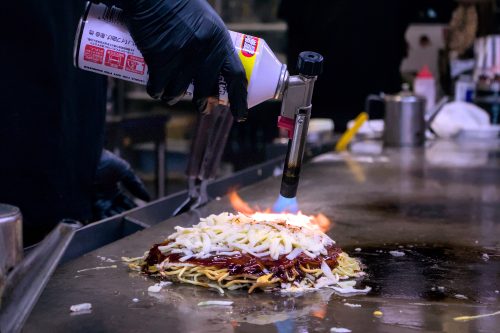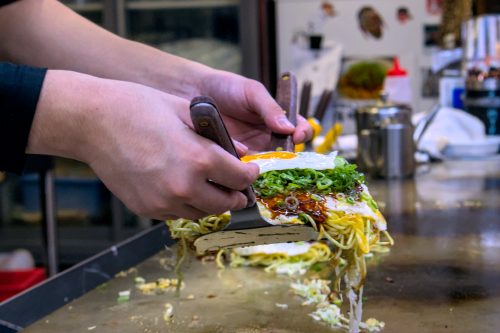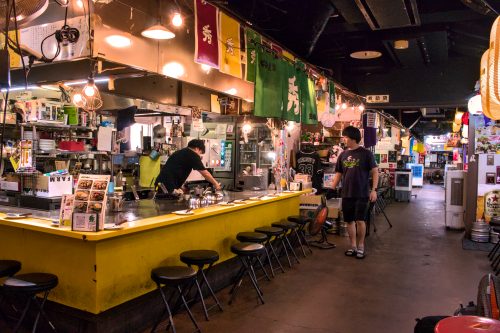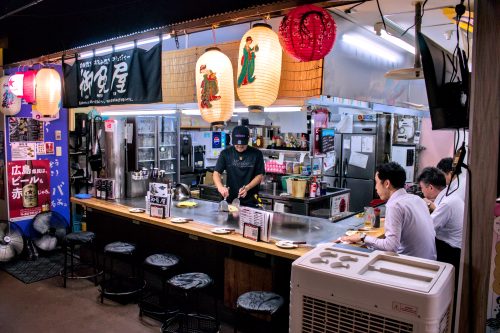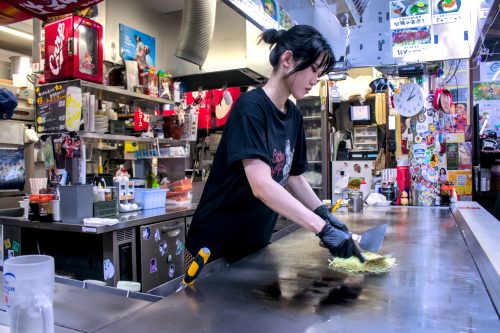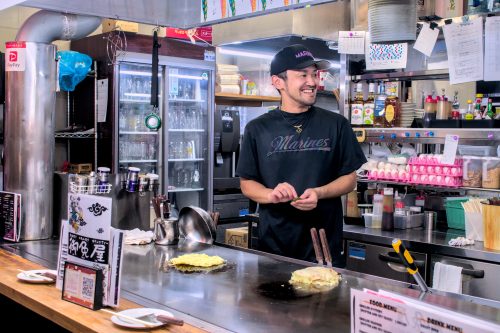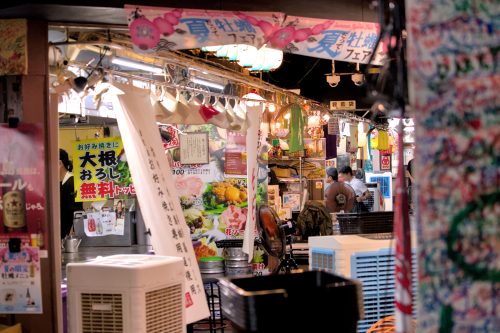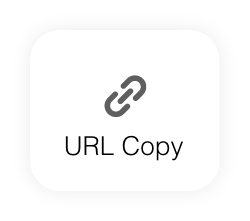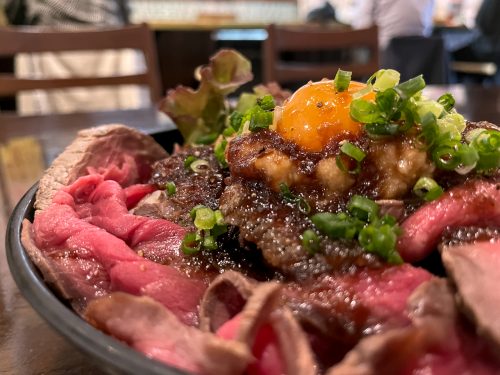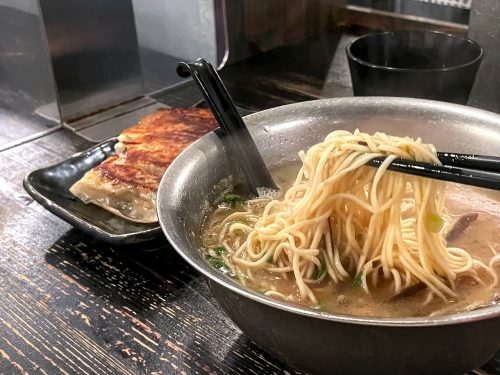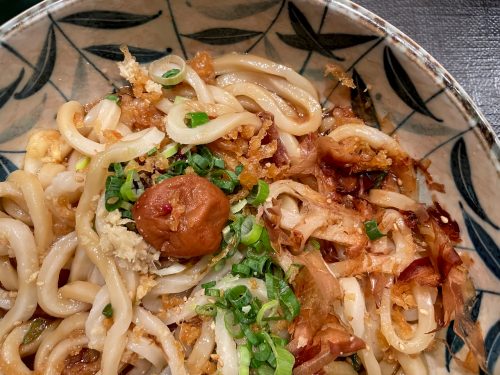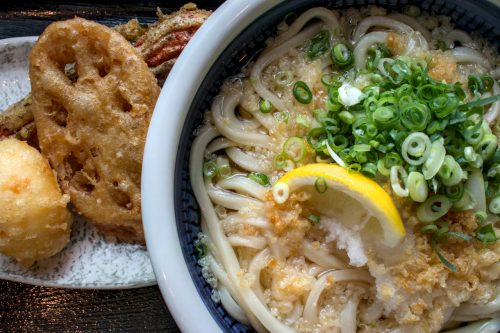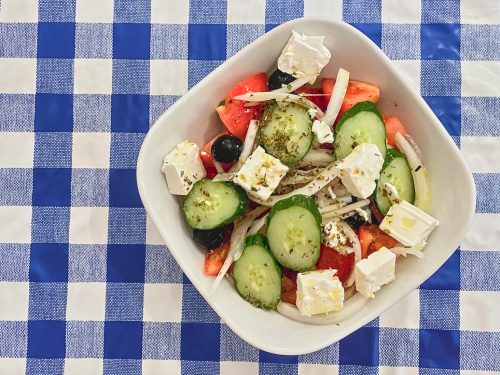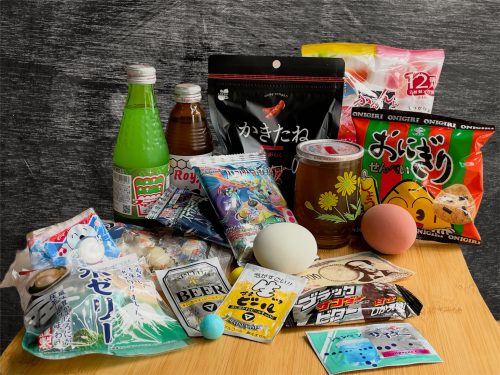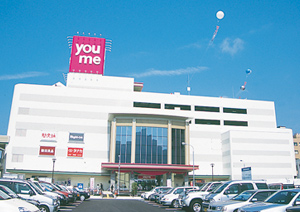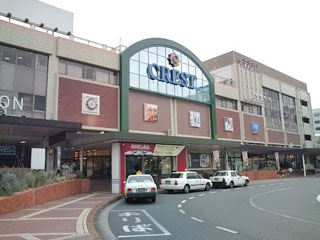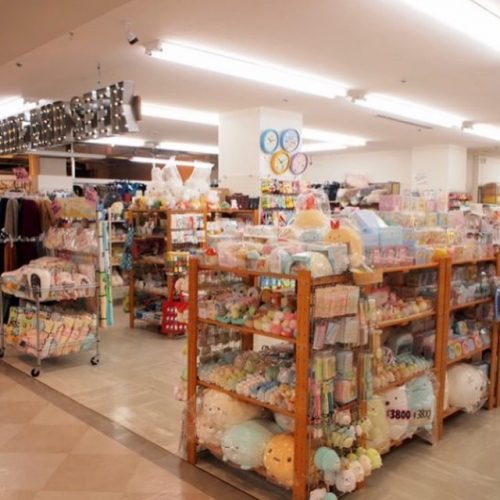Eat
Hiroshima Okonomi Story Ekimae Hiroba (ひろしまお好み物語 駅前ひろば)
It’s 1965 and Hiroshima City bans the use of Nishishinteshi Square for food stalls. Many of those stalls sold the city’s most popular dish—okonomiyaki. They had to go somewhere. Many moved to nearby Okonomimura, a building still active today. Others found a place in Hiroshima Station. Hiroshima Station has undergone many renovations and changes over the decades, so today you won’t find long aisles of okonomiyaki shops there, but the spirit of those displaced okonomiyaki stands continues at nearby Hiroshima Okonomi Story Ekimae Hiroba, just across the street from Exit 5.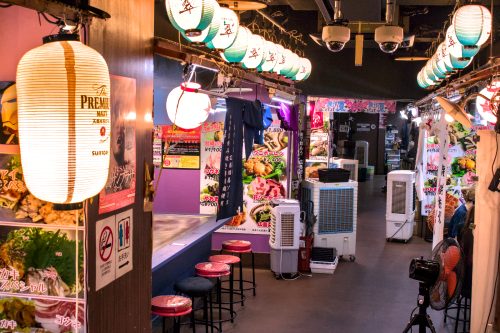
Ekimae Hiroba is an “okonomiyaki theme park” located on the 6th floor of the Hiroshima Full Focus Building. 15 shops, each with their own take on Hiroshima’s defining dish, circle around a 1,300-square-meter space evocative of the okonomiyaki shops found in Hiroshima Station during the Showa era. Ekimae Hiroba, despite the vibe, opened in 2006, and has since been a key player in the city’s okonomiyaki and teppanyaki scene. The space itself is open year-round from 10AM to 11PM, but individual shops keep varying hours. Many shops, but not all, offer English menus. If you ask, some can even accommodate unique dietary needs like vegetarianism.
The shop’s owners are considered artisans of their craft. They follow the principle of “Shu-Ha-Ri” (守破離), a concept from martial arts training applied to cooking. “Shu” refers to the stage when a young chef must strictly adhere to and preserve the tradition. “Ha” is the next stage of development where the chef can begin to experiment within the tradition. Lastly, “ri” is the achievement of mastery such that the chef can freely express himself without fear of compromising the art.
The defining feature of Hiroshima Okonomiyaki vs. similar dishes around Japan is that the ingredients are layered one on top of the other. This is distinct from Kansai’s style which throws everything together in a hearty batter and Tokyo’s monjayaki which is also batter-based but is gooey and has finely chopped ingredients. Typical ingredients in Hiroshima are a thin, crepelike pancake, soba or udon noodles, shredded cabbage, squid tempura, sliced pork belly, egg, a thick oyster sauce and toppings like green onions and oysters. Soba noodles are often preferred by the locals, and the noodles typically used, like Hiroshima’s own Isono Seimen, are specially designed with okonomiyaki in mind so they don’t burn and maintain an ideal texture.
While exploring the dim, warmly lit alleys of fluorescent okonomiyaki shops, you can find a range of expressions of the Hiroshima okonomiyaki arts. The first shop on the left is Yakunjya, where the cabbage is cut thick and stir fried in beef fat. They use thin noodles and their own sauce, which dates back to their original restaurant in 1869. Deeper in the alley is Jyu-ban (10番), famous for mounds of fresh, grated daikon radish added as a free topping.
Nearby is Kyokara. Even as they support tradition with the use of Hiroshima’s Isono Seimen noodles and Otafuku sauce, they expand on the tradition by the addition of thinly sliced, grilled beef and a nest of slivered nori atop their signature okonomiyaki. Nearby, Momi-chan and Shu are great stops to savor the simple elegance of pure, traditional Hiroshima-style okonomiyaki. The owner of Momi-chan, moreover, is a real character, and can be found making his customers laugh while he cooks for them.
New on the block is Gomenya, across from Kyokara. The owner-chef, Yuji Sato, humbly says their okonomiyaki is just in the basic style, but his recommended okonomiyaki has a mouth-watering twist. It is topped with a mix of grilled pork and beef tossed in his own miso sauce, a special blend of both red and white varieties, and then topped with a fresh egg. Kyokara, moreover, has an English menu that includes a “Vegan Special Okonomiyaki” that includes bean sprouts and shimeji mushrooms.
One of the most respected shops is Sozo. They make their okonomiyaki soba noodles from scratch offsite at their own facility, and they don’t use any chemical seasonings to bring out the flavor of their ingredients. Of similar philosophy is Iron Man. This shop emphasizes letting the natural flavor of the ingredients shine on their own. The Iron Man Special is topped with clams, spring onions, and whole shiso leaves.
To taste the soul of Hiroshima, which is 100% Carp fan, take a seat at -Hiko-, a shop fully devoted to the city’s professional baseball team. You’ll find unique okonomiyaki dishes named after heroes of the team like Takahiro Arai, the manager, and infielder Ryosuke Kikuchi, who holds the Nippon Professional Baseball record for the most assists and the longest error-free streak. Arai’s okonomiyaki boasts a variety of locally produced ingredients like oysters, squid tempura, and green onions. Meanwhile, Kikuchi’s okonomiyaki is advertised as “stamina” food and includes grated yam and natto. And if you’re into Japanese baseball, consider Lyttle in the back. This shop is named in honor of Jim Lyttle, the American professional baseball player who was instrumental in helping the Carp win two league championships and the Japan series in 1980.
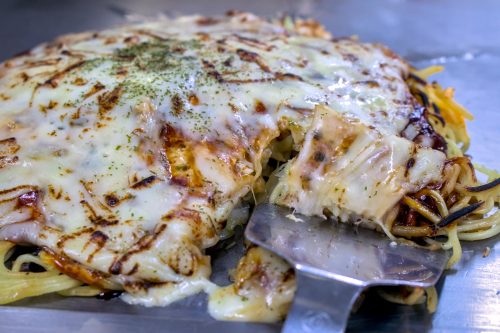
With crispy noodles and a rich, smoke flavor, Okamoto’s Goku Aburi Cheese okonomiyaki oozes with cheese like a pizza.
If you really want to push the limits of Hiroshima style okonomiyaki, visit HOPE and get okonomiyaki with both rice and noodles in the mix, or sit down at OKAMOTO’S. There are many cheesy okonomiyaki varieties in Ekimae Hiroba, but few ooze over with melted cheese like OKAMOTO’S Goku Aburi Cheese, “Extreme Grilled Cheese” in English.
Denko Sekka, which means “lightning fast,” is a national chain with their own take on okonomiyaki. They steam their cabbage without pushing it down, resulting in a fluffy interior that many enjoy. Their namesake dish is topped with shiso, a beaten egg and a mound of green onions, making the okonomiyaki look like an omelet hill.
Outside Ekimae Hiroba, Otafuku is queen of the okonomiyaki sauce market, but inside, shops like Jyu-ban, Iron Man, Sozo and HOPE use a unique sauce developed exclusively for Ekimae Hiroba: Hiroshima Washira No Kesshō Sauce. It concentrates the umami of Hiroshima oysters and the acidity of Setouchi lemons. Hard to find outside Ekimae Hiroba, it is available there for customers to buy as a souvenir.
If you have the time to cook, Ekimae Hiroba also offers rental kitchens where guests can follow an okonomiyaki cooking instructor to begin their own delicious journey along the path of okonomiyaki “Shu-Ha-Ri.”

- Open
- Facility open at 10AM
Individual shop times vary by store
- Closed
- Facility closes at 11PM
Individual shop times vary by store
Moment of Joy
The 15 okonomiyaki restaurants in Hiroshima Okonomi Story Ekimae Hiroba are all famous and popular among the people of Hiroshima. However the most popular restaurant would have to be “Denko Sekka,” where you can enjoy okonomiyaki wrapped in fluffy eggs like an omelet, as well as teppanyaki that goes well with an alcoholic beverage. The local way of eating okonomiyaki is to not use chopsticks. Cut one piece off the okonomiyaki with the small spatula, then let it cool down by letting it rest there. After that, enjoy from the spatula itself! Follow up dinner with karaoke or pachinko, with facilities located in the very same Full Focus Building!


